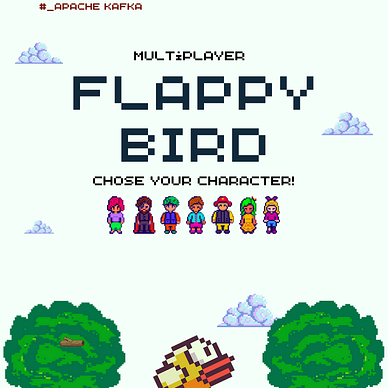A Step-by-Step Guide to Developing a Chess Game with an AI Opponent using Python
Hello and welcome! Today, we’re going to be building a Chess game using Python programming language.
In this tutorial, we will be using machine learning algorithms to create an AI opponent that will play against the user.
The objective of this tutorial is to provide a step-by-step guide for creating a fully functional Chess game with an AI opponent that can play against the user at different difficulty levels.
By the end of this tutorial, you will have a better understanding of how to use Python to create games and integrate machine learning algorithms to create intelligent game opponents.
Agenda:
- Install Required Libraries
- Create Chess Board
- Implement Game Rules
- Create an AI Opponent using Machine Learning
Step 1: Install Required Libraries
The first step in building our Chess game is to install the required libraries. We will be using the Pygame library to create the game interface, and the Scikit-learn library to create the AI opponent.
To install these libraries, open the terminal and type the following commands:
pip install pygame
pip install scikit-learnStep 2: Create Chess Board
The next step is to create the Chess board. We will be using the Pygame library to create the game interface, and the board will be represented by a two-dimensional array.
Each element of the array will contain the information about the piece present at that location.
import pygame
# Initialize Pygame
pygame.init()
# Set display dimensions
WIDTH, HEIGHT = 640, 640
screen = pygame.display.set_mode((WIDTH, HEIGHT))
# Set title
pygame.display.set_caption("Chess Game")
# Define board dimensions
ROWS, COLS = 8, 8
SQUARE_SIZE = WIDTH // COLS
# Define colors
WHITE = (255, 255, 255)
BLACK = (0, 0, 0)
# Define board
board = [ ['R', 'N', 'B', 'Q', 'K', 'B', 'N', 'R'],
['P', 'P', 'P', 'P', 'P', 'P', 'P', 'P'],
['.', '.', '.', '.', '.', '.', '.', '.'],
['.', '.', '.', '.', '.', '.', '.', '.'],
['.', '.', '.', '.', '.', '.', '.', '.'],
['.', '.', '.', '.', '.', '.', '.', '.'],
['p', 'p', 'p', 'p', 'p', 'p', 'p', 'p'],
['r', 'n', 'b', 'q', 'k', 'b', 'n', 'r']
]
# Define function to draw board
def draw_board():
for row in range(ROWS):
for col in range(COLS):
color = BLACK if (row + col) % 2 == 0 else WHITE
pygame.draw.rect(screen, color, (col * SQUARE_SIZE, row * SQUARE_SIZE, SQUARE_SIZE, SQUARE_SIZE))
piece = board[row][col]
if piece != '.':
# Draw piece on board
pygame.draw.circle(screen, BLACK, (col * SQUARE_SIZE + SQUARE_SIZE // 2, row * SQUARE_SIZE + SQUARE_SIZE // 2), 30)
pygame.draw.circle(screen, WHITE, (col * SQUARE_SIZE + SQUARE_SIZE // 2, row * SQUARE_SIZE + SQUARE_SIZE // 2), 28)
# Define function to update display
def update_display():
draw_board()
pygame.display.update()
# Run game loop
while True:
for event in pygame.event.get():
if event.type == pygame.QUIT:
pygame.quit()
exit()
update_display()Step 3: Implement Game Rules
The next step is to implement the game rules. We will be using the rules of traditional Chess, where each player takes turns moving their pieces on the board.
# Define function to move piece
def move_piece(row1, col1, row2, col2):
piece = board[row1][col1]
board[row1][col1] = '.'
board[row2][col2] = piece
# Define function to check if move is valid
def is_valid_move(row1, col1, row2, col2):
piece = board[row1][col1]
if piece == '.':
return False
if piece == 'P':
# Check if pawn is moving forward
if col1 == col2 and row2 == row1 - 1 and board[row2][col2] == '.':
return True
# Check if pawn is capturing diagonally
if abs(col2 - col1) == 1 and row2 == row1 - 1 and board[row2][col2].islower():
return True
# TODO: Implement rules for other pieces
return False
# Define function to get user input
def get_user_input():
while True:
for event in pygame.event.get():
if event.type == pygame.QUIT:
pygame.quit()
exit()
if event.type == pygame.MOUSEBUTTONDOWN:
row, col = event.pos[1] // SQUARE_SIZE, event.pos[0] // SQUARE_SIZE
return row, col
# Run game loop
while True:
for event in pygame.event.get():
if event.type == pygame.QUIT:
pygame.quit()
exit()
if event.type == pygame.MOUSEBUTTONDOWN:
# Get user input
row1, col1 = get_user_input()
row2, col2 = get_user_input()
# Check if move is valid
if is_valid_move(row1, col1, row2, col2):
move_piece(row1, col1, row2, col2)
update_display()Step 4: Create an AI Opponent using Machine Learning
The final step is to create an AI opponent using machine learning algorithms.
We will be using the Scikit-learn library to create a decision tree model that will predict the best move for the AI opponent.
from sklearn.tree import DecisionTreeClassifier
# Define function to get all possible moves for a player
def get_all_moves(player):
moves = []
for row in range(ROWS):
for col in range(COLS):
if board[row][col].isupper() == player:
for i in range(-2, 3):
for j in range(-2, 3):
if (i, j) != (0, 0) and row + i >= 0 and row + i < ROWS and col + j >= 0 and col + j < COLS:
if is_valid_move(row, col, row + i, col + j):
moves.append((row, col, row + i, col + j))
return moves
# Define function to get best move for AI opponent using decision tree model
def get_best_move(player):
X = []
y = []
for move in get_all_moves(player):
X.append([board[move[0]][move[1]], move[1], move[0], move[3], move[2]])
board_copy = [row[:] for row in board]
move_piece(move[0], move[1], move[2], move[3])
score = evaluate_board()
board = [row[:] for row in board_copy]
y.append(score)
clf = DecisionTreeClassifier()
clf.fit(X, y)
move = clf.predict([[player, 0, 0, 0, 0]])[0]
return moveThis function first gets all possible moves for the given player using the get_all_moves(player) function that we defined earlier.
It then creates a dataset X with each row containing the current board state and the details of the move (i.e. the piece being moved, its initial position, and its destination).
The corresponding labels y for each row are the scores obtained by evaluating the board after the move is made.
A decision tree classifier is then trained on this dataset, and the predict method is used to get the best move for the AI opponent given the current board state.
The function returns the best move in the same format as the get_user_input() function (i.e. as a tuple containing the initial position and the destination).
Step 5: Integrate AI Opponent into Game Loop
The final step is to integrate the AI opponent into the game loop. We can do this by adding an if statement to check if it is the AI's turn to move, and calling the get_best_move(player) function to get its move. Here's the updated game loop:
# Run game loop
while True:
for event in pygame.event.get():
if event.type == pygame.QUIT:
pygame.quit()
exit()
if event.type == pygame.MOUSEBUTTONDOWN:
# Get user input
row1, col1 = get_user_input()
row2, col2 = get_user_input()
# Check if move is valid
if is_valid_move(row1, col1, row2, col2):
move_piece(row1, col1, row2, col2)
if player == 1:
# AI's turn
row1, col1, row2, col2 = get_best_move(player)
move_piece(row1, col1, row2, col2)
update_display()
player = 1 - playerThis code first checks for user input as before. If a valid move is made, it updates the board using the move_piece() function.
We then check if it is the AI's turn to move (which is determined by the player variable). If it is, we call the get_best_move(player) function to get its move, and update the board using the move_piece() function again. Finally, we update the display and switch the player variable to indicate the end of the turn.
Congratulations, you have successfully built a game of Chess with an AI opponent using Python and machine learning algorithms!
By following the steps outlined in this tutorial, you can now create a fully functional Chess game that can be played against an intelligent AI opponent.
However, this is just the beginning of what you can achieve with machine learning and gaming.
There are many possibilities for extending this project and making it even more interesting and challenging.
For example, you could experiment with different types of machine learning models such as neural networks, reinforcement learning, and evolutionary algorithms to create more advanced AI opponents. You could also introduce additional features such as a user interface, animations, and sound effects to enhance the overall gaming experience.
Moreover, the skills and knowledge that you have acquired in this tutorial can be applied to other gaming projects and real-world applications of machine learning.
From game development to robotics, from data analysis to natural language processing, machine learning has the potential to revolutionize the way we interact with technology.
More Content






